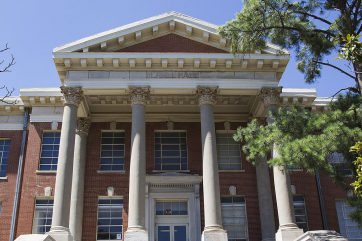Tufted Puffin Replaces Rodents On Alaskan Island Formerly Known As Rat Island
By Staff ReporterFive years after scientists and environmentalist used rodenticide to restore "Rat Island" to its former glory, a new species has once again emerged on the Alaskan Island. This time, however, it will only add to diversity.
The exotic-looking tufted puffins have been seen breeding for the first time ever on the recently re-named Hawadax Island, according to the Island Conservation's press release. The 6,000-plus acre island is uninhabited by humans and located among Alaska's Aleutian Islands on the Alaska Maritime National Wildlife Refuge. It was formerly called "Rat Island" after rodents seized the land mass centuries ago and eliminated most of its native bird species.
Since scientists and environmentalists used rodenticide in 2008 to end the species' invasive reign, native birds have returned in greater numbers than anticipated, according to Island Conservation. The rats arrived via trading boats in the 18th century.
According to the press release, the tufted puffins are not native and breeding for the first time ever on the island. Stacey Buckelew, an Island Conservation biologists, described her first experience on Rat Island in 2007.
"When I first landed on what was Rat Island in 2007, it was an eerily silent place," she said. "A typical Aleutian island is teeming with wildlife, swirling with noisy, pungent birds. Not this place. It was crisscrossed with rat trails, littered with rat scat, scavenged bird bones, it even smelled...wrong."
She then praised her recent visit to Hawadax Island, so named by the Aleutian Pribilof Islands Association, who represent the Unangan (Aleut) community. The Unangan people didn't live on the island but used it often. Hawadax means "those two over there" and refers to that relationship.
"...the island is hardly recognizable among the cacophony of birds calling everywhere; it's alive with bird fledglings-teals, eiders, wrens, sparrows, eagles, peregrine falcons, gulls, sandpipers," she said. "The island is transforming."
Worldwide, 40 percent of endangered species rely on islands for their survival, though islands make up just five percent of the world's land mass, according to the Island Conservation. Eighty percent of all extinctions have occured on islands since 1500. Invasive species have been removed successfully 1100 times worldwide, 500 of them involving rats.
"Hawadax Island is on a trajectory for recovery and the ecological gains we are witnessing are tremendous. They are a sustained testament to a conservation methodology and partnership that works," said Gregg Howald, North America Region Director for Island Conservation. "We have had similar successes working with The Service and The Conservancy elsewhere. We are committed to a long-term conservation partnership to apply these transformative conservation tools."








